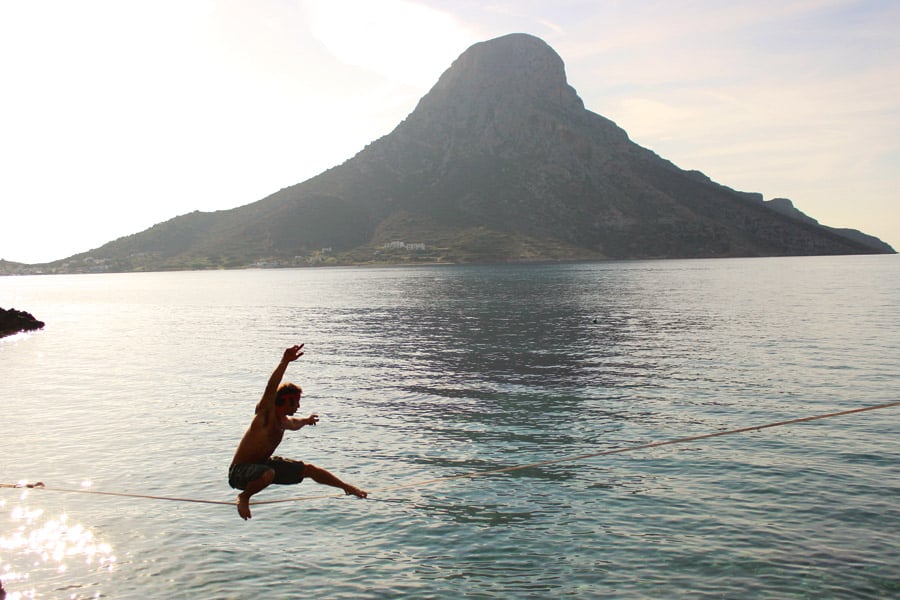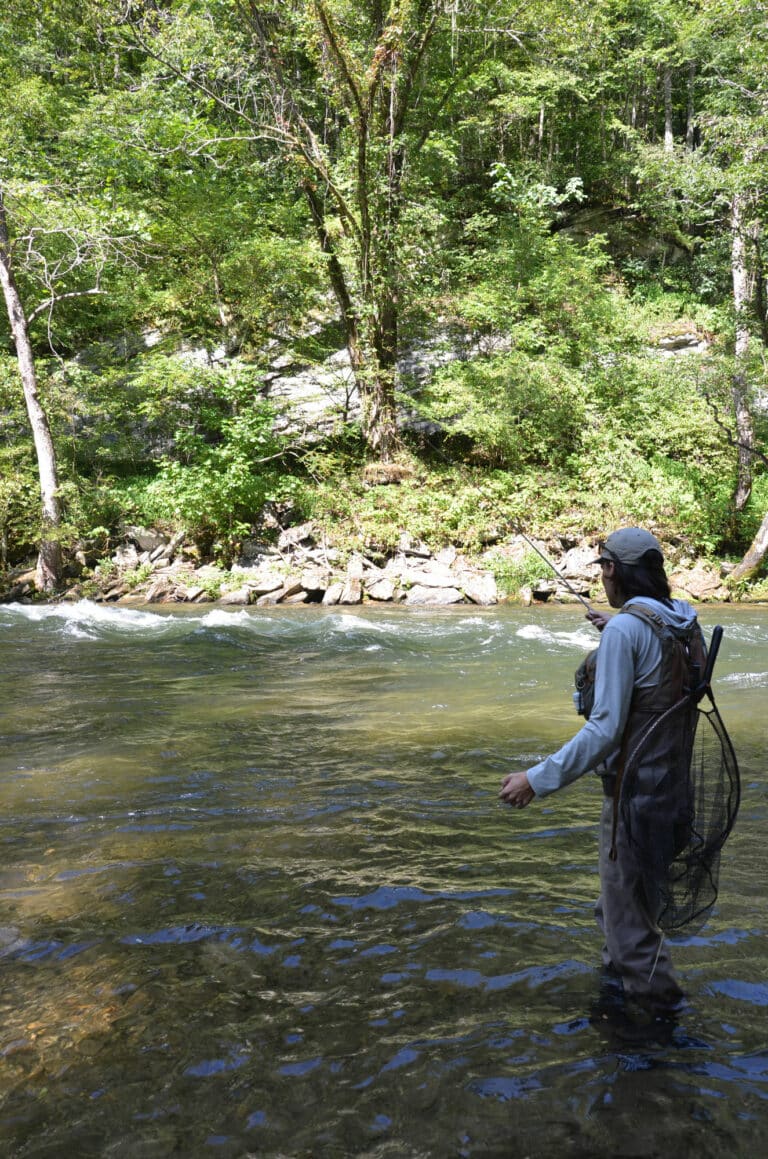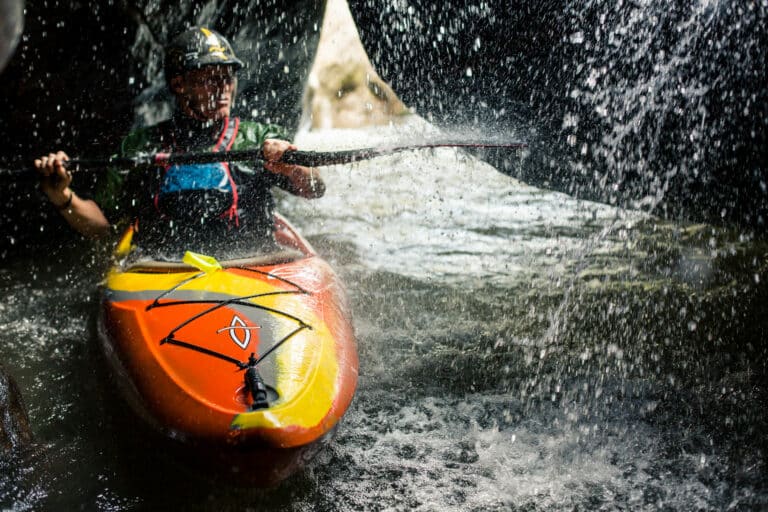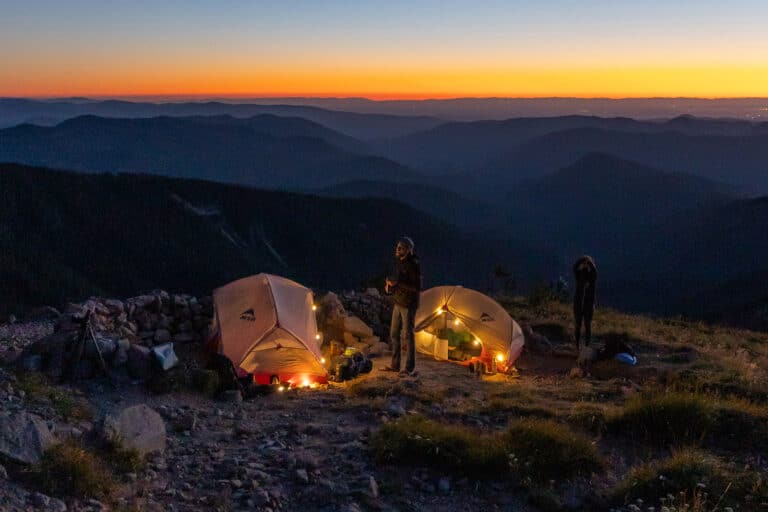By Stuart Peck
For most people, stringing a piece of webbing over a 100-foot-wide canyon and trying to balance while walking across seems like a bad idea; Edward Yates isn’t most people.
“People tell me I’m crazy all the time,” he said.
Even Yates admits, when he was first introduced to the sport by his college roommate at Appalachian State, 10 years ago, he thought it was an activity for “circus freaks”. His attitude and enthusiasm quickly changed, and when he jumped on a slackline for the first time he was instantly addicted.
Yates has a degree in mechanical engineering and a passion for doing what he loves: highlining, rock climbing, and living a life free of constraints, schedules, and deadlines. Talk to the professional highliner and he’ll be the first to tell you he’s loving life, living in a Chattanooga garage not far from where he grew up on Lookout Mountain. He’s traveled the world in search of great lines, including an Asia tour and a European tour. He’s also one of the few highliners who did the famed Rostrum highline in Yosemite National Park during its early days. Now he says the 75’ line, while still a great highline, is not as trendsetting as it once was.
“At one time it was a cutting edge line… back when I did it,” he recalls. “It is still one of the tallest.”
Slacklining and highlining were born out of boredom. They became popular rest day activities for rock climbers. Terms like free soloing and first ascent have been bridged between the two sports, and some of the better known highliners are also rock climbers, like Dean Potter and Ammon McNeely. Yates explains that highlining is basically the same thing as slacklining except you’re a lot farther from the ground and usually crossing a body of water or a natural gap like a canyon—or in Yates’ case, two peaks on a building.
“The Tennessee Aquarium is the most iconic structure in Chattanooga,” says Yates. “It made people realize that highlining is safe. I fell a lot on that line but it’s mind control over muscle. It is probably the most extreme event that has happened in Chattanooga.”
In October Yates walked a 200-foot-long highline between two of the glass peaks of the Tennessee Aquarium in downtown Chattanooga. It was part of the 2014 RiverRocks Adventure Sports Games which take place in the city each year. Before he ever climbed onto the roof of the unique structure he says he had to walk a different tightrope, trying to convince management of the facility to let him pull off the stunt.
“The aquarium is an extremely legitimate organization,” Yates said. “I went to them and it was a very long process, let me tell you. It was really a couple months of who knows how many emails. I actually had to create a lot of intense legal documents for liability reasons, procedures, a safety plan to convince them. This was so off the scale of what people do day to day there that it was hard for them to even consider.”
Eventually after a lot of coercion, Yates found himself climbing the glass mountains and rigging two lines that he’d cross. It involved removing several panels of glass and setting up one of the most complicated rigs he’s ever built for a line. After performing the “first walk” as he calls his first ascents, it propelled him into the spotlight as a highliner, and he hopes it leads to other similar events at locations around the region.
So what does Yates do when he’s not walking across thin pieces of webbing? He spends a lot of time working to get his slacklining business, CobraPrime Slacklining, off the ground. He also moonlights as a tree climber and trimmer, welder, and artist. Yates is also big into personal sayings and is working to create a line of t-shirts with his quotations. Some of his favorites: Love the whipper, (don’t be afraid to fail); the time is always prime (the best opportunity to try something is the present); and master the mechanism (Yates calls the human body the best mechanism in the known universe).
Yates is taking some of that motivation to Chattanooga’s parks department where he’s been in talks about creating a slacklining park in the city. At this point, he says the concept isn’t being accepted by the city and now he’s turning to a petition on the website change.org and Facebook to try and gain support for the idea.
“I feel like it should be mainstream,” Yates exclaims. “The beauty of slacklining is that you can do it anywhere. This sport has so much potential to grow, it just takes getting people’s minds open to the idea.”
Just like Yates didn’t give up when he first stepped onto a line strung across his front yard in college, he says he’ll continue to push toward bringing this mostly underground sport to the forefront of people’s minds. No time is more prime then right now… or something like that.








